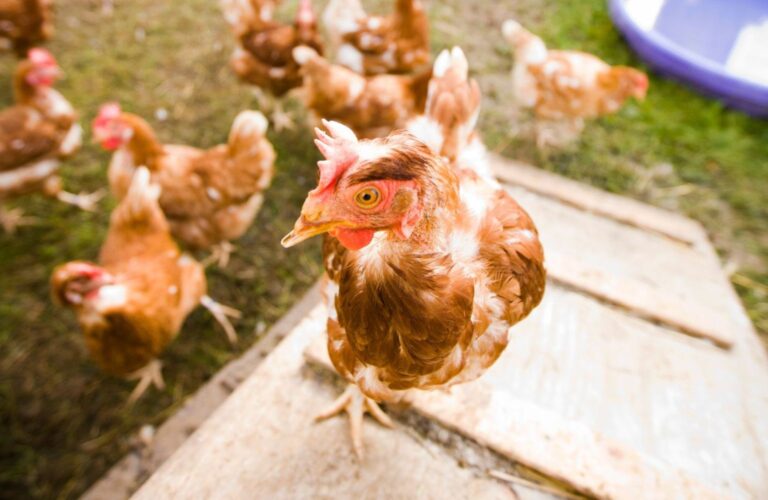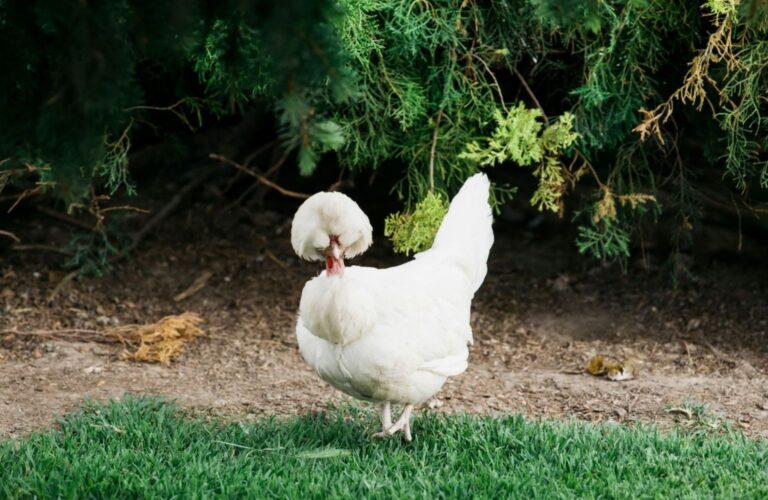Going back to the land is all the rage these days. Whether it’s the excitement of a pet (especially one that produces food), savings on the grocery bill, or just a desire to know where our eggs are coming from, raising chickens is an activity that’s attracted more than a few backyard farmers.
For the ones still deciding if chicken farming is for them, the big question is: “How much does it cost to raise chickens?” We’re glad you asked!
To answer simply, the maximum cost to raise chickens in your backyard will be about $69/month, for a flock of 5 chickens, kept for 5 years. This includes the birds, feed, bedding, a brand-new high-quality coop, and miscellaneous costs like medicine, pest control, and feeders and waterers.
We broke down our cost projections as follows:

Keep in mind that we calculated well on the high side to be safe and this is an extremely general estimate which doesn’t account for all the savings available from eating your eggs or even selling them for a profit. Also, one-time investments, like a coop, will be cheaper the more chickens you have and the longer you keep them. If you plan smart and go for the long haul, it’s possible that this figure could be as low as $10/month. If you treat it like a business, you could even turn a profit!
Let’s look at the specific costs that go into raising backyard chickens. By making smart choices with each of your supply purchases, you’ll be able to raise the healthiest, happiest chickens possible (and hopefully have plenty of eggs to show for it)!
The cost of raising chickens in the backyard is determined by:
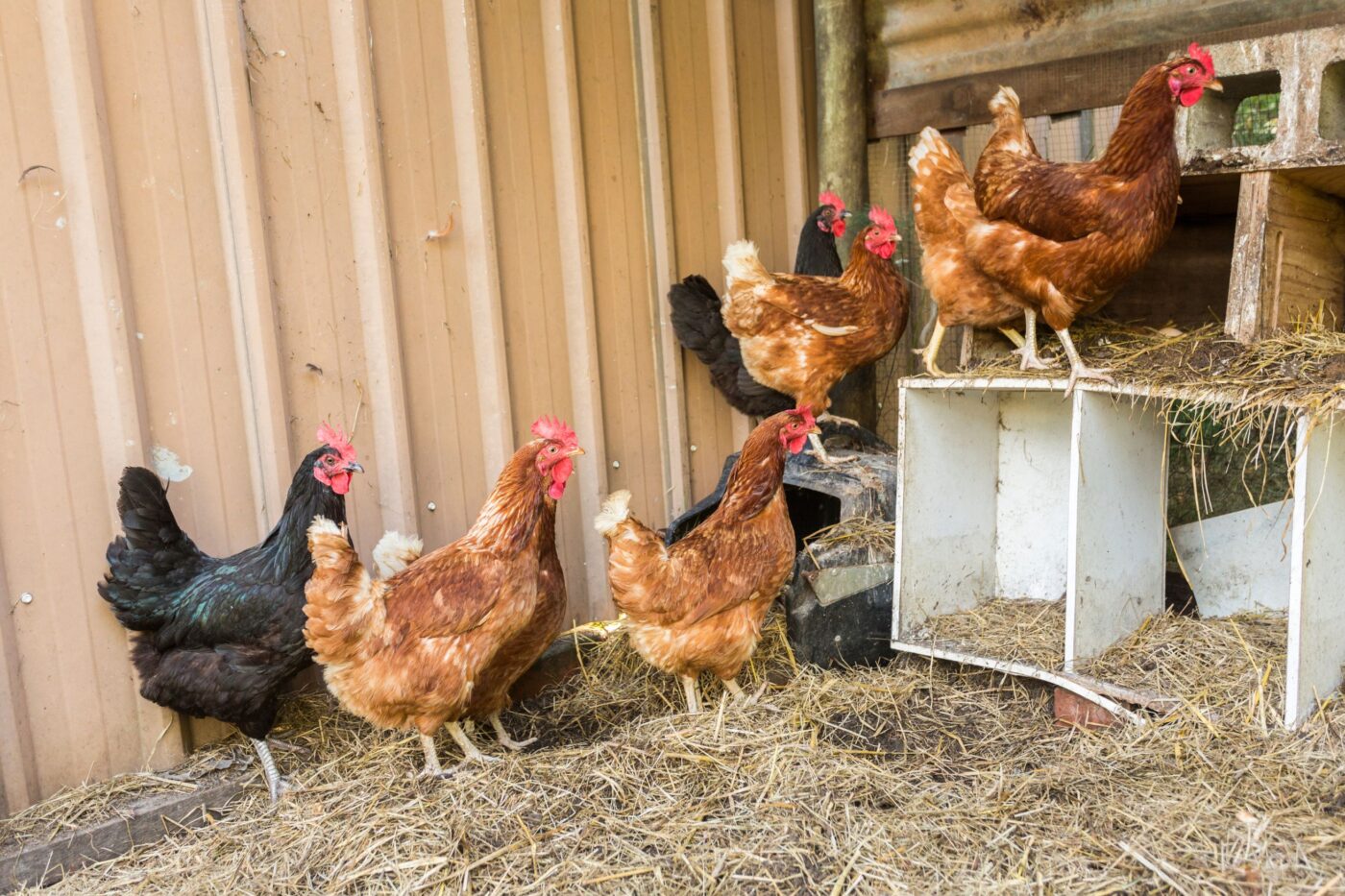
1. Chicken Coop –
There is a massive variation in the types of coops and how much each will cost. Those with the DIY gene might prefer to build their coop from scratch. For the rest, there are a variety of prebuilt chicken coops like A-Frame Chicken Coops, and Barn-style Chicken Coops that can house flocks ranging from coops for one chicken, to coops for 100 chickens (and beyond)!
Build your chicken coop
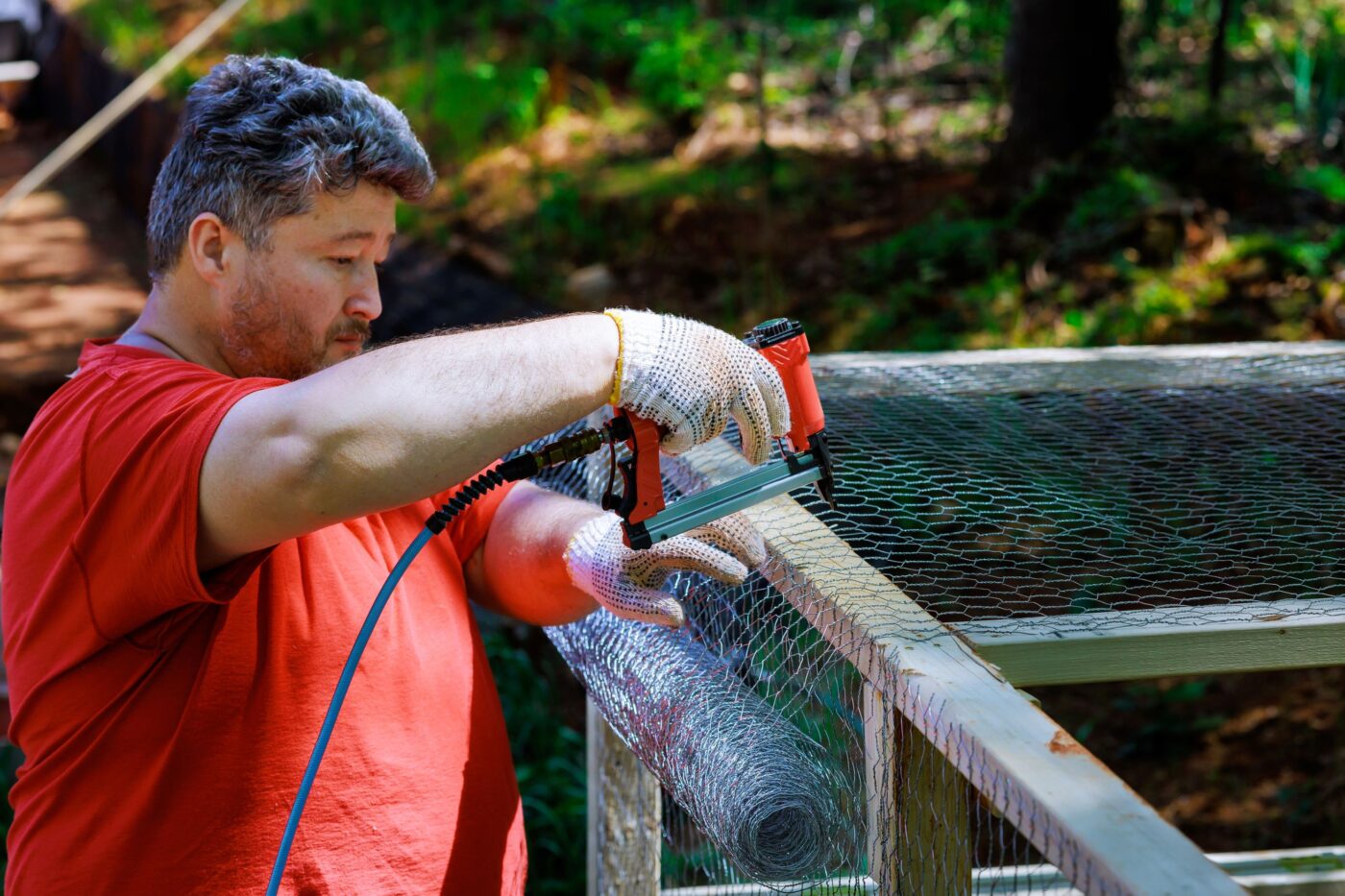
If you’re especially handy, you may be able to construct a coop out of recycled materials at a very minimal cost. Old boards, sheet metal, and fencing; all make great chicken coop components. Someone even used an old washing machine! If you do use recycled materials, be sure they don’t contain anything that will harm your chickens. Sharp edges, loose wires, and rusty nails are all hazards to look out for when using recycled materials to construct an animal shelter.
Alternatively, you could go the route of building your coop with new materials. There are plenty of chicken coop plans for sale or for free. If you want to channel your inner architect, go ahead and create your design. Remember, a quality coop should include nesting boxes and roosting areas off the ground and provide each chicken with about 3 square feet of space inside the chicken coop. It’s also a good idea to include an outdoor run area that gives your birds access to the dirt while still offering protection from predators.
Buy a fully constructed chicken coop
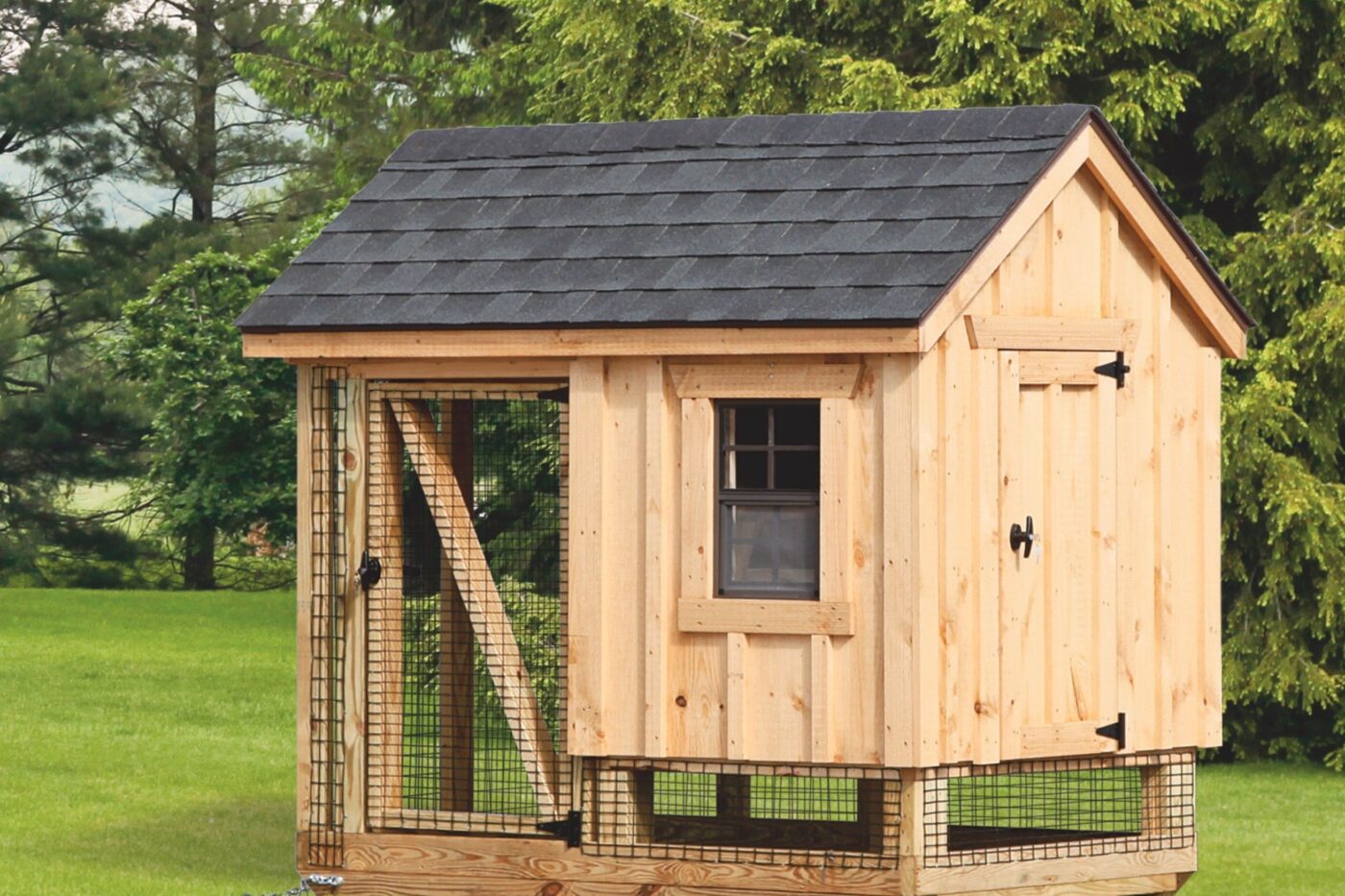
If you’re not sure you have the skills required to construct a coop yourself, or you just don’t have the extra time and energy it would take a prefab chicken coop is probably the route to go. When selecting a chicken coop, make sure it’s manufactured by a company that understands chickens and their needs. A high-quality coop will contain nesting boxes, roosting spaces above the ground, and good ventilation. It will also be secure against anything that might want to get in and eat them.
An enclosed outdoor run is also highly recommended, since this allows your birds access to dirt and grass, without exposing them to predators. When figuring chicken coop into the cost of raising chickens, it’s important to remember that a coop is a long-term investment. The more years you plan on raising backyard chickens, the lower the per-year cost of your coop. Over 5 years, it’s safe to figure on a coop being about 30%-50% of your total costs. You can get a free quote on an Amish-built chicken coop here.
2. Chickens
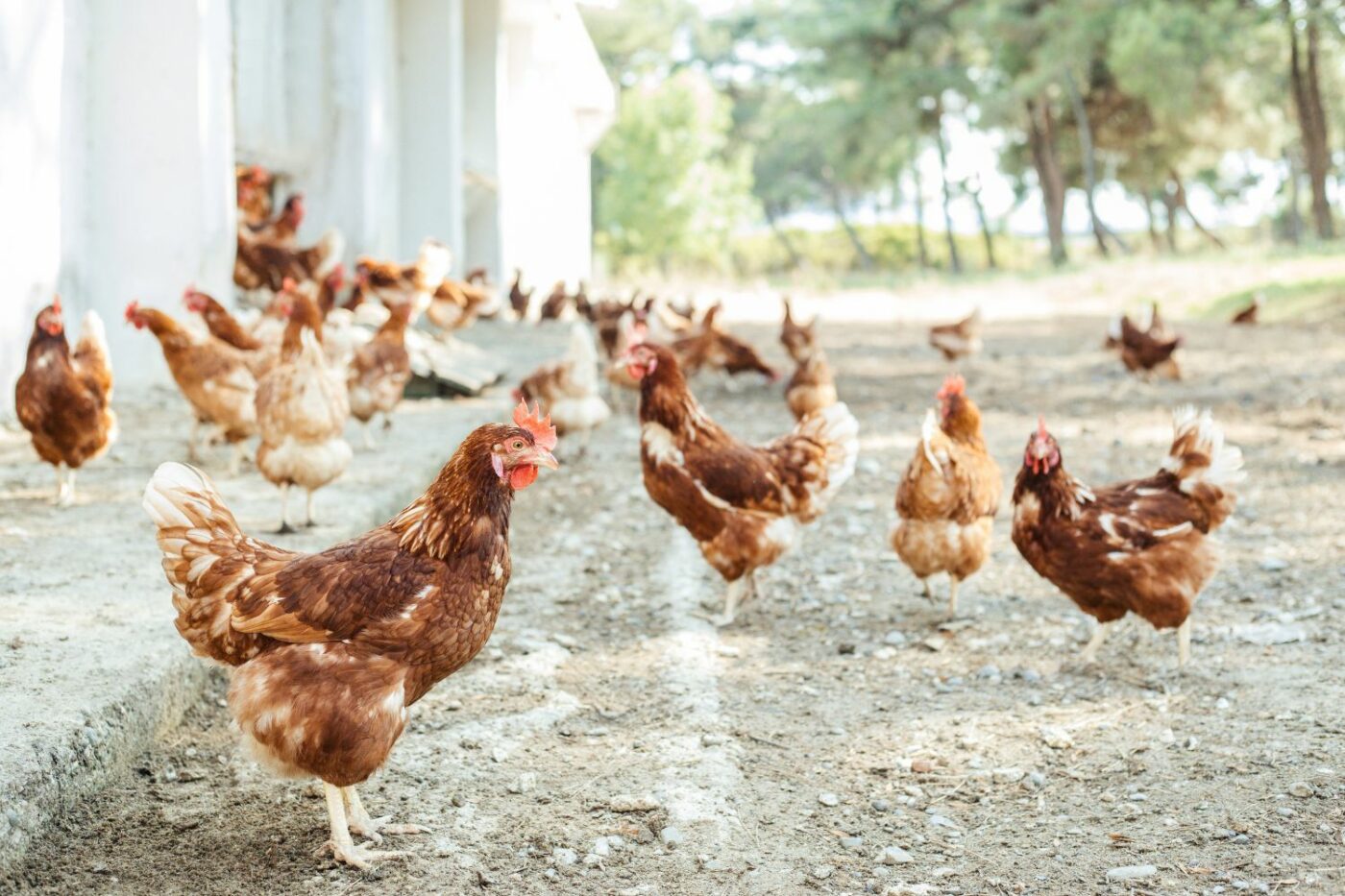
The birds themselves are one of the upfront costs of raising chickens. The exact cost varies quite a bit depending on the breed of the bird and its age at the time of purchase. When it comes to breeds, the average cost is around $2.00-$5.00/bird for day-old chicks of common varieties like Rhode Island Red, Plymouth Rock, and Australorp. For chicks of rarer breeds, like some types of Easter Eggers, the cost can be up to $30/bird.
There are roughly 4 ages at which chickens are commonly sold: day-old chicks, pullets, point-of-lay birds, and adult hens.
Day-old chicks
These are the cheapest to purchase upfront, but they will also require the largest amount of feed and other supplies before you start to get any return in terms of eggs. For the first while, they will need to be kept in a brooder with a heat lamp, which will require extra work and attention. When purchasing chicks, keep in mind that even with the best care there is a good chance that one or more chicks from any given flock won’t survive to adulthood.
Pullets
Pullets are generally sold at 6-10 weeks of age, although some folks consider birds up to 20 weeks as pullets. By this age, they’ve grown out feathers and can survive being moved to an outdoor coop. This is a great age to purchase chickens, since they require much less attention than new chicks, but can still be easily tamed. The cost for pullets is usually about $12-$20 more than a day-old chick of the same breed.
Point-of-lay
It’s pretty much what it sounds like; these are hens that are just ready to start laying. The benefit of this is obvious: hopefully no months of waiting to start enjoying eggs from your backyard flock! These birds are generally sold around 16-22 weeks depending on the breed. Again, prices vary, but they are usually only a few dollars more than pullets.
Adult Hens/Layers
To guarantee that you’ll get eggs right away, an adult hen is the best choice. These are not commonly sold by hatcheries; you’ll probably need to find someone with chickens willing to sell them privately. The cost will generally be a few dollars more than a younger bird. The benefit is that the seller might be able to tell you roughly how many eggs to expect per week.
3. Feed
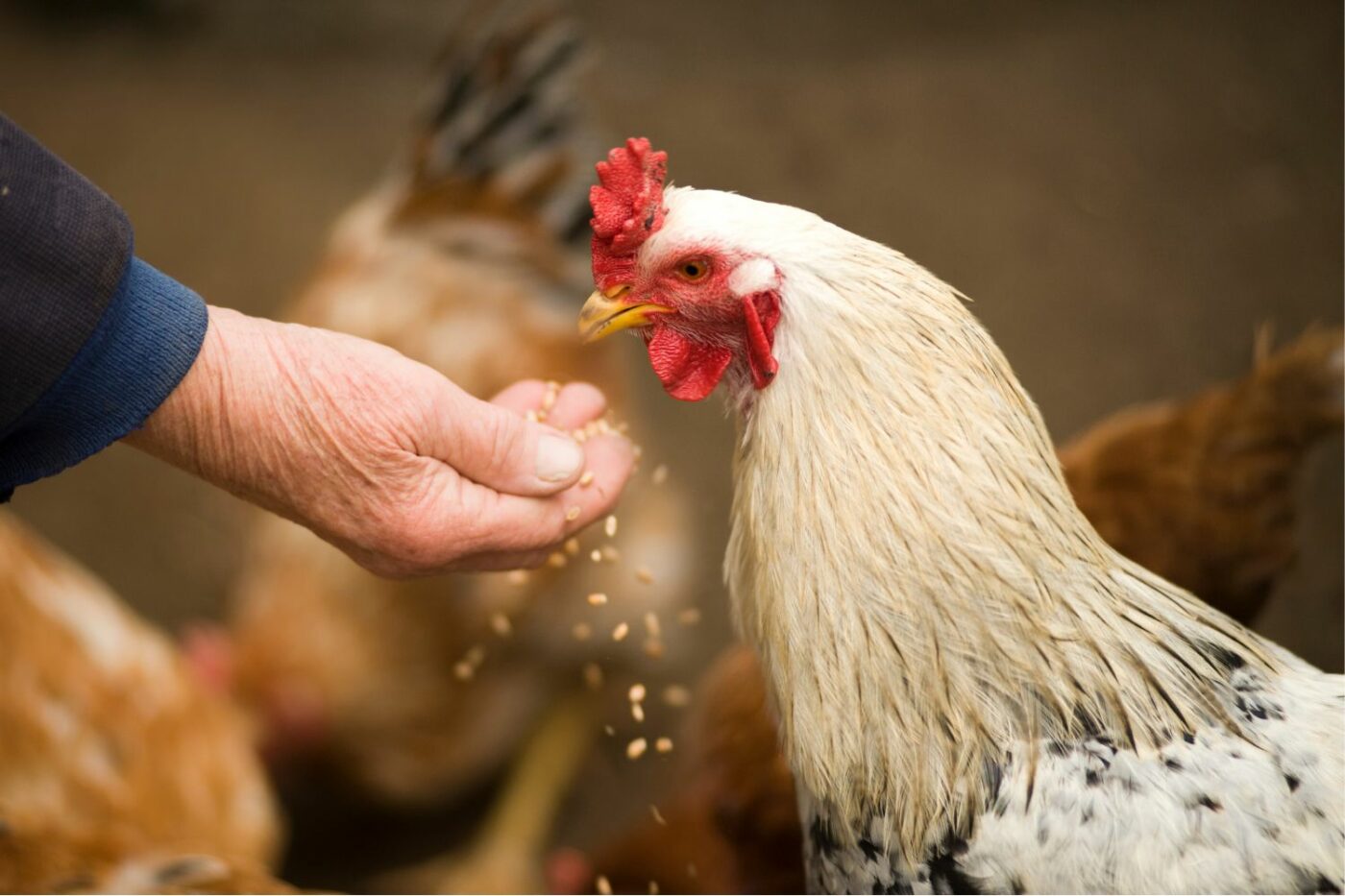
This is the biggest reoccurring cost of raising chickens. A chick will eat an average of 1 pound of feed per week for its first 10 weeks. A mature bird will need approximately 1.5 pounds of feed per week, although that number can go down if they’re able to free-range for some of their food. Chickens also love kitchen scraps! So how does feed affect the cost of raising backyard chickens? You’ll want to start chicks with “Crumbles” or chick starter feed, which usually costs from $0.50 -$0.75/lb., with organic options being on the more expensive end. Layer pellets for adult chickens can cost from $0.25 – $0.75/lb. with some organic options costing as much as $1.50/lb.
Scattering cracked corn on the ground can be an excellent supplement to other feed: it can cost under $0.20/lb. and allows chickens to exercise their instincts to scratch and peck for their food. Remember two tips that will help you save on your feed costs: buying feed in bulk will bring down your cost/lb. drastically and the more kitchen scraps you can feed your chickens, the less store-bought feed they’ll require!
4. Bedding
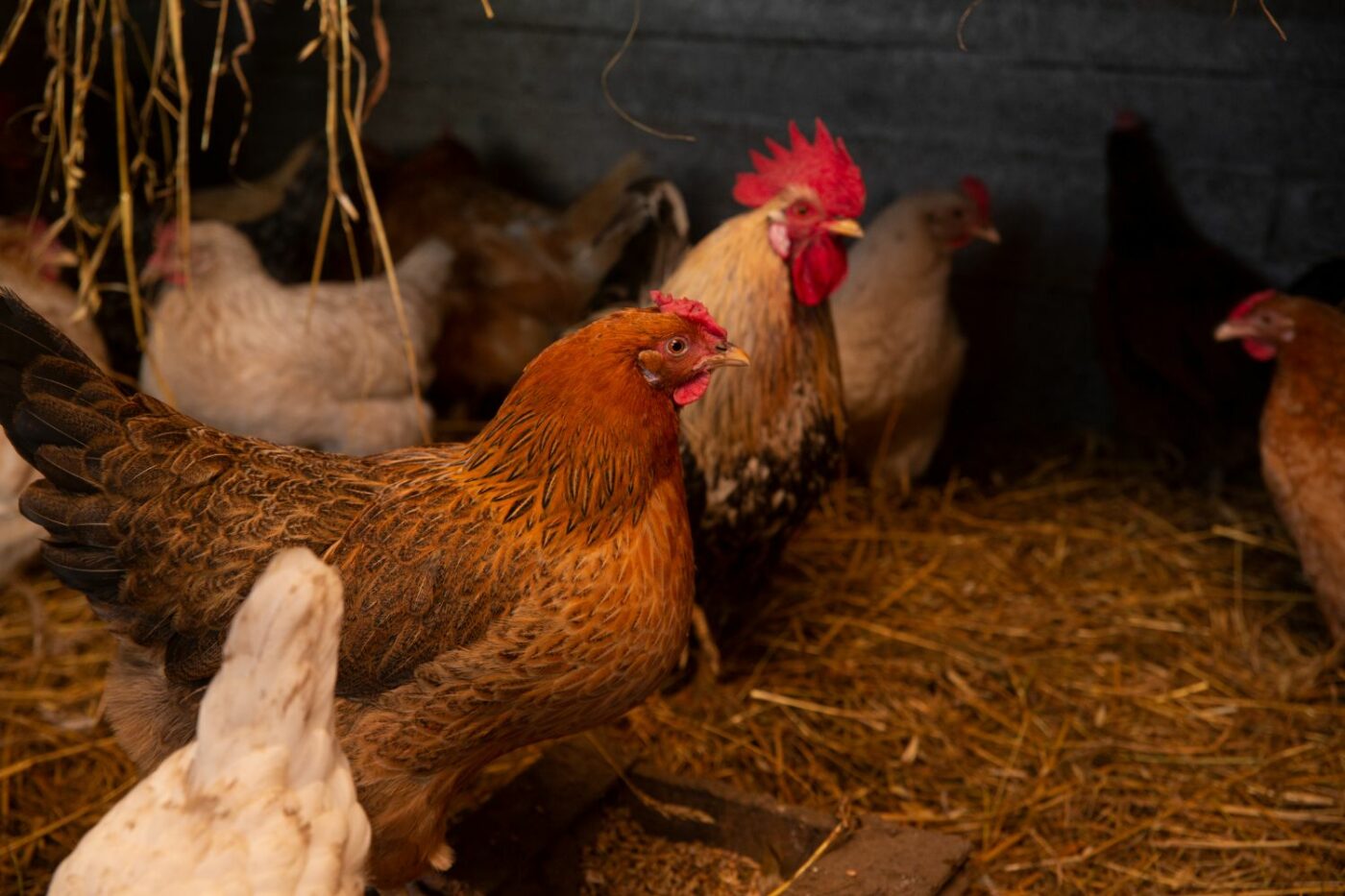
This is the other ongoing cost of raising chickens, but good composting techniques can provide some additional return on investment. There is an incredible variety of bedding materials that chicken owners use in their chicken coops including straw, wood shavings, hemp, shredded paper, pine needles, sand, wood chips, grass clippings, dirt, and dried leaves. While each method has its fans, we’ll focus on wood shavings, straw, and hemp as they are the most popular, due in part to their compostability and easy availability at most hardware or animal supply stores.
Straw
Straw has been the chicken bedding of choice for centuries, as it was readily available on most farms. It is still a popular choice since chickens enjoy picking through it and it’s easily compostable. The downside of straw is that it can be more expensive and harder to find in some areas, compared to other bedding types. It also needs to be kept fresh and clean, as damp straw is the perfect breeding ground for several pests and diseases (like aspergillosis). Straw generally costs from $5 to $10 per bale (14”x18”x36”).
Wood Shavings
Wood shavings may currently be the most popular type of bedding for chickens since they are easy to buy at most farm or home improvement stores. Stick with larger shavings as smaller sizes can be quite dusty. Don’t use sawdust! Wood shavings are popular because they’re usually easier to clean out than straw. The high acidity in the wood can also balance out the high levels of nitrogen found in chicken manure. A compressed bale of wood shavings (3 cubic feet) costs around $6 to $10.
Hemp
Hemp is the new kid on the block when it comes to chicken bedding (well, kind of). It was common in the United States centuries ago but has only recently made a comeback as an animal bedding material. It’s popular for its absorbency, lack of dust, compostability, and natural antiseptic properties. While it is initially more expensive than some other bedding materials, many people find that it requires less frequent changing, making it more economical in the long run. A bale (about 44 lbs.) of industrial hemp bedding for chickens will cost about $40.
Always make sure you clean your coop out often enough that the bedding doesn’t become matted or smelly. Some methods of bedding management, like the deep litter method, involve adding fresh bedding on top of the old to allow deeper layers to self-compost. Whatever method you choose, look to find the balance between keeping your coop fresh and cutting costs by not using more bedding than necessary.
5. Miscellaneous Costs
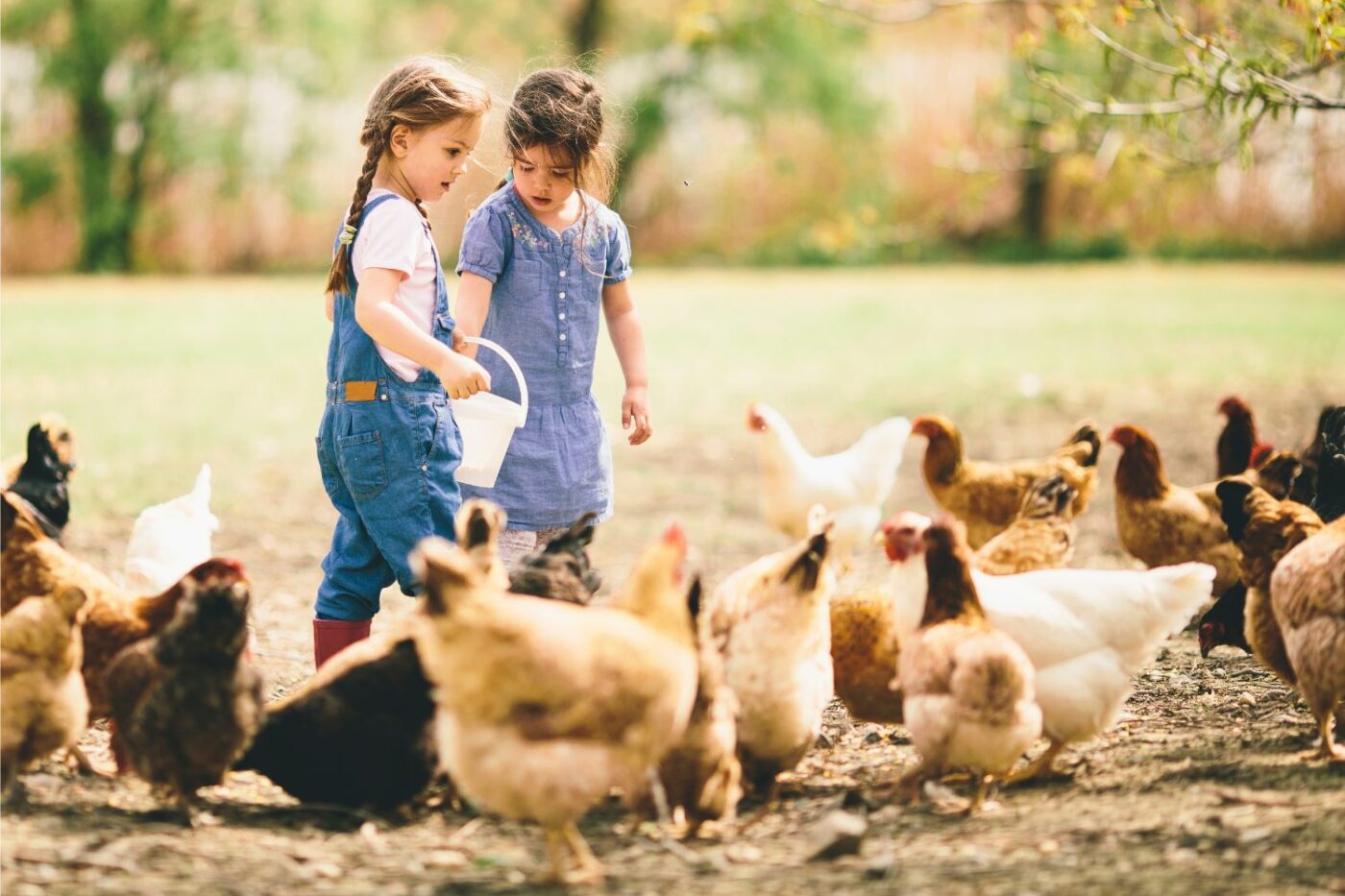
Besides the main costs of raising backyard chickens, there will always be those little extras that seem to pop up here and there. When planning for your flock, remember to plan for feeders and waterers. A small feeder will cost $20 – $25 while a heavy-duty model with a capacity for up to 50lbs of feed at a time will run $50 – $70. A 5-gallon waterer will provide days of fresh water for your flock and only costs about $35. Other costs that might factor in from time to time are pest control, such as diatomaceous earth for treating lice and mites, and any medications needed to keep your flock happy and healthy.
6. Bonus: Ways to recoup some of the cost of raising chickens
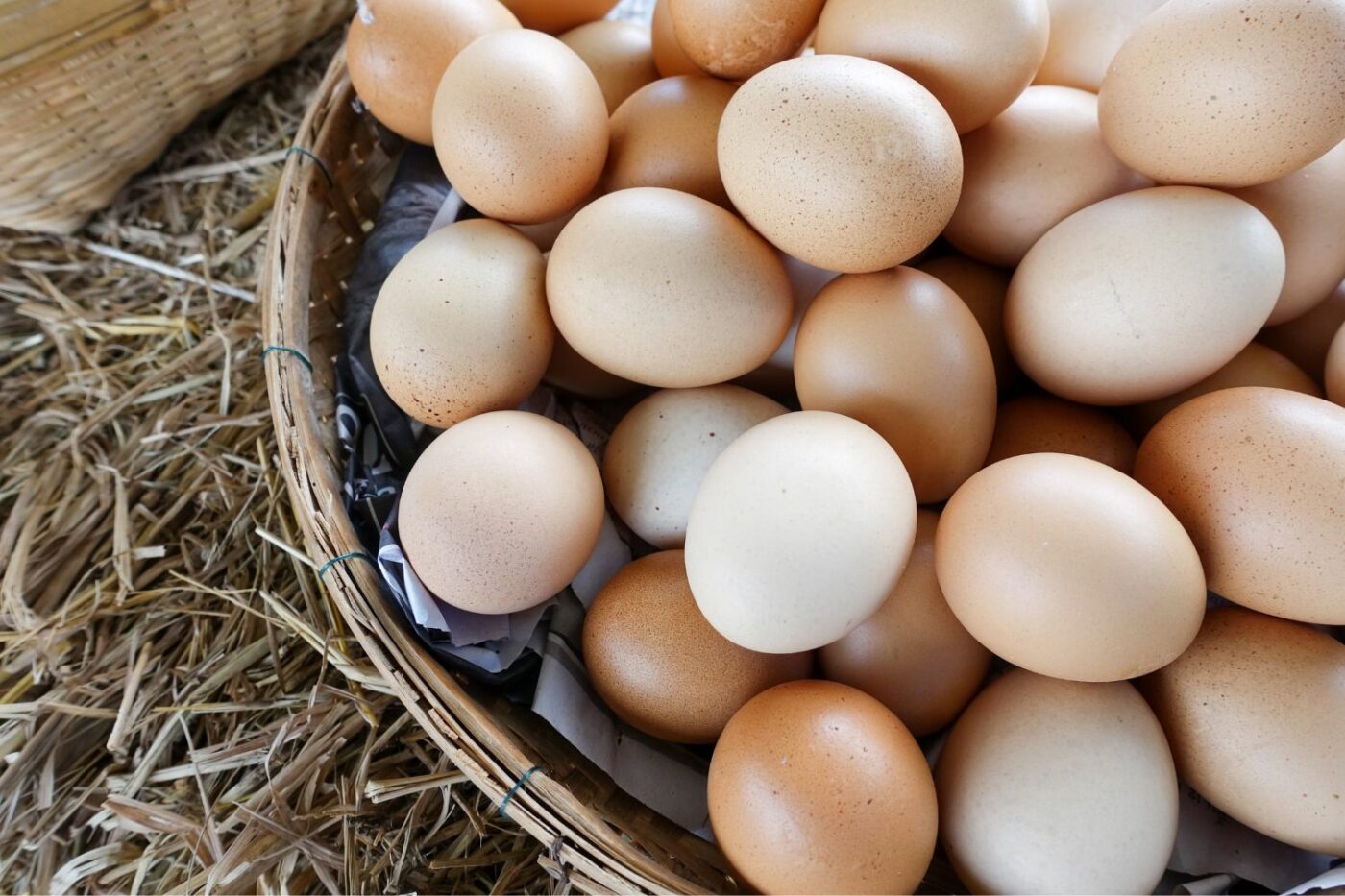
Let’s be honest, if you’re raising backyard chickens and hoping to make the Fortune 500, you’re probably going to be disappointed. However, numerous ways raising chickens can save you money!
Fresh Eggs
This is the obvious one. It’s easily possible for a good laying hen to produce 200 to 250 eggs each year. With a flock of 5 chickens, that’s 1000 eggs or about 83 dozen (to be conservative)! With local, free-range eggs going for at least $3.00/dozen in many parts of the US, that’s several hundred dollars of savings right there. Add on the satisfaction and peace of mind that comes with knowing exactly where your eggs came from and you have the recipe for a successful omelet! (Get it?)
You may even consider selling extra eggs to friends and neighbors. If you decide to advertise and make a small business out of selling eggs, make sure you’re aware of any applicable local laws regarding egg sales. You can find a list of egg laws by state here
Manure and compost
Used bedding mixed with chicken manure isn’t a pretty sight…unless you’re in a garden! By composting the waste your flock creates, you’ll avoid paying for those expensive bags of fertilizer at the store. As mentioned earlier, some people use the deep litter method in their coops to reduce cleaning frequency, reduce bedding use, and allow some of the composting to take place even before the coop is cleaned out. If your birds create more compost than you need for your property, you always have the option to offer it for sale and further cut overall costs.
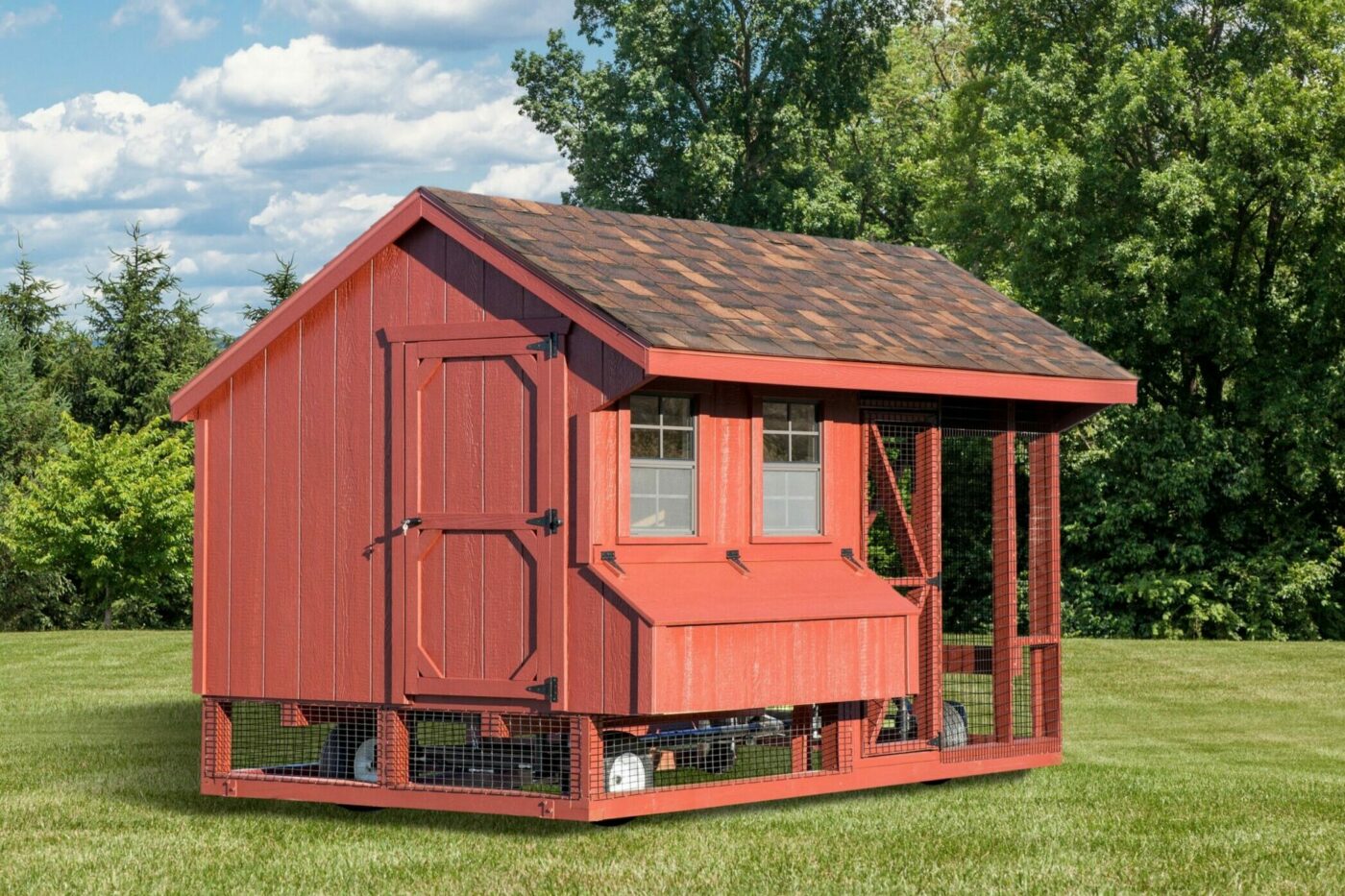
And there you have it! Plan for the long term (for example, buy a backyard chicken coop that will last for decades). Purchase supplies in bulk. Recycle kitchen scraps and chicken waste. By making your flock as efficient as possible, the cost of raising backyard chickens doesn’t need to be all that high. Best of luck to you and your flock!


